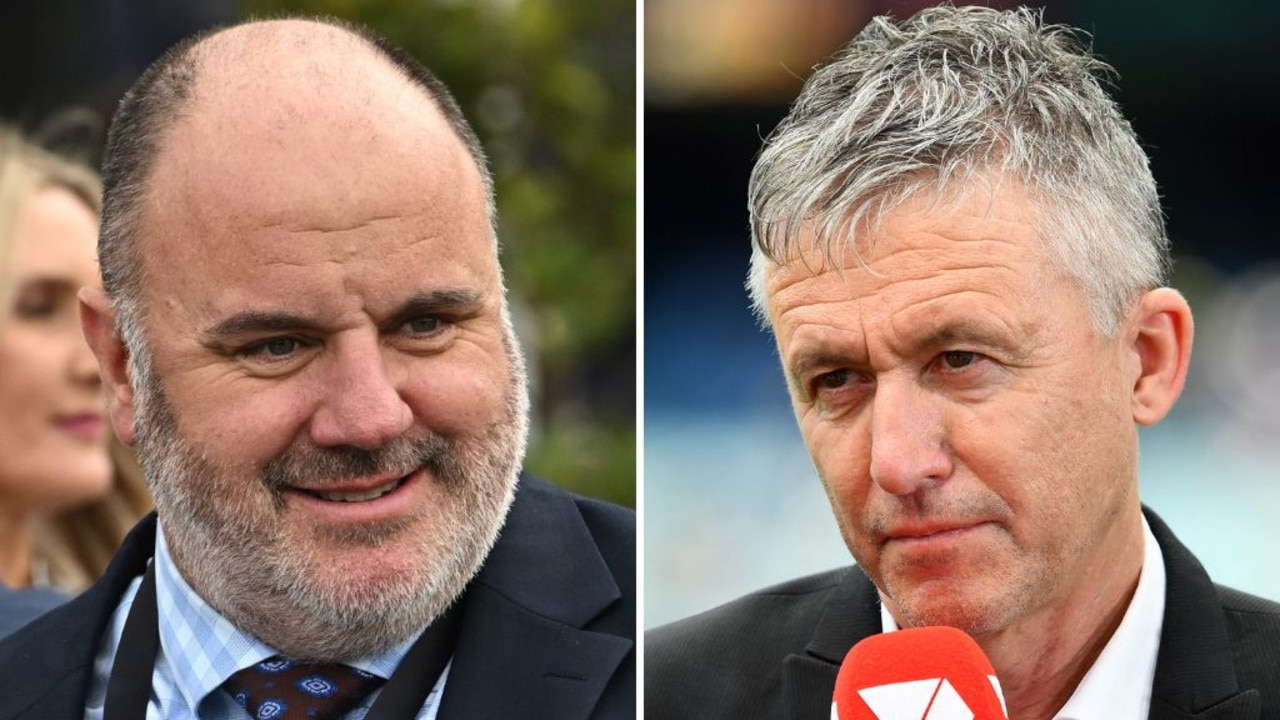Analysis: David Warner’s public retirement plan drops selectors in an awkward spot
By laying his cards out on the table, David Warner has left selectors in a potentially tricky spot. It still might not go his way, writes DANIEL CHERNY.

Cricket
Don't miss out on the headlines from Cricket. Followed categories will be added to My News.
It wasn’t quite “you can’t fire me, I quit,” but David Warner’s decision to go public with his vision of riding off into the sunset at next year’s Sydney Test has the potential to place national selectors in an invidious spot.
One of Australia’s most accomplished Test openers, Warner – despite the various bruising sagas of his career – is in the echelon of players that tend to get swan songs.
While contrasting players and characters, Warner’s record is similar to that of his former coach Justin Langer. Both men reached 100 Tests, more than 20 Test tons, and while Warner’s figure could yet sway, both average in the mid-40s.
Langer was afforded a farewell Test alongside Glenn McGrath and Shane Warne at the end of the 2006-07 Ashes. But in Langer’s case, he announced that match would be his last on the eve of the game, with a series already sewn up. It was hardly presumptuous or self-indulgent.
The same assurances though cannot be given for Warner, who has essentially flagged that he wants to play nine more Tests.

It’s a bit like a Prime Minister who has just won an election announcing they will retire halfway through their next term. That’s a lot of polls and party room bickering to get through.
If Warner had arrived in the UK on the back of a couple of dominant seasons of Test cricket this would be a different discussion. But he is averaging less than 30 since the start of 2021, with his lone century being the Boxing Day Test double-ton against South Africa.
It’s one thing if the public is not convinced whether Warner deserves to keep his spot. Quite another though that the selectors have for several months been equivocal about Warner’s place in the side beyond the World Test Championship final against India beginning on Wednesday, the first of those nine Tests in his dream run-home.
And Australia hasn’t even named a Test squad beyond the second Ashes Test.
To Warner’s credit, he was not cheeky enough to say he would definitely make it to the SCG, scene of the third and final Test against Pakistan.
Even a character as punchy as the lefty knows that without runs in June, he’ll be lucky to make it to July, let alone January.

Fairytales are nice ideas but Test cricket seldom affords them. Ian Healy was denied a farewell match at the Gabba in 1999 while Ricky Ponting made four and eight as the Aussies were crushed by South Africa in his last Test in 2012.
If Warner comes out and makes tons at The Oval and Edgbaston then he’ll have clearly given himself and selectors the breathing space for a celebratory last hurrah.
But if Mohammed Shami and Mohammed Siraj have their way with him this week, and with nemesis Stuart Broad to come, then George Bailey, Tony Dodemaide and Andrew McDonald will have to seriously contemplate playing bad cop. Whether they have the gumption to do so when Warner remains a central plank to two white-ball World Cup tilts over the 12 next months is another story.
It’ll be easy enough if Warner fails or succeeds wildly. Things will get awfully murky if he’s making 20s and 30s.
The man most likely to replace Warner should he stumble early is Marcus Harris, who has said Warner deserves to go out on his own terms.
But at what cost?
Originally published as Analysis: David Warner’s public retirement plan drops selectors in an awkward spot




